Apple's iPhone 4: Thoroughly Reviewed
by Brian Klug & Anand Lal Shimpi on June 30, 2010 4:06 AM EST- Posted in
- Smartphones
- Apple
- iPhone 4
- Gadgets
- Mobile
Camera Usability
It still takes almost two seconds to activate the camera on the 4, which is enough time to miss whatever it is you’re trying to grab a photo of. Thanks to the iOS 4 update however, the shutter is almost instantaneous. The difference appears to be that the photo is committed to memory but not fully written to NAND, whereas before the photo would be written to the Flash before you could take another picture. Power loss in the middle of snapping photos seems pretty rare on a smartphone so the tradeoff, if I’m correct, makes sense.
Apple opted for a lower noise rather than higher resolution sensor in the iPhone 4 and it did pay off. The main camera shoots photos at 2592 x 1936 compared to the EVO 4G’s 3264 x 1952, but the resulting images are far less noisy - particularly in low light situations:
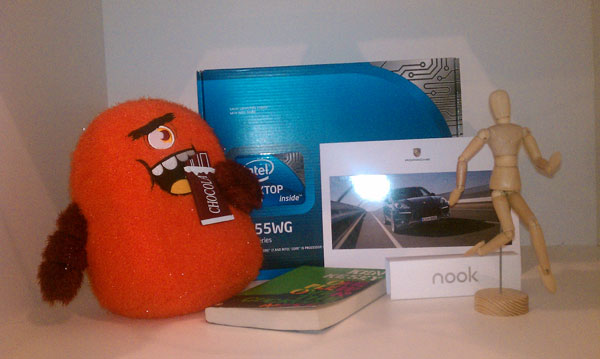
HTC EVO 4G - Low Light
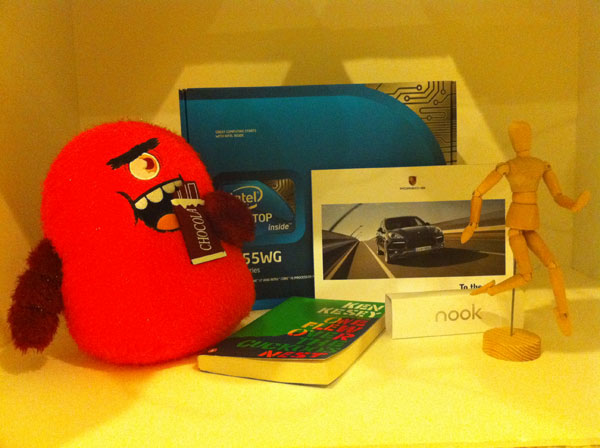
Apple iPhone 4 - Low Light
The 4’s main camera, like the HTC Incredible and EVO 4G, is a decent replacement for a point and shoot if you’re primarily outdoors. You’re still going to get better image quality out of a good point and shoot, but the tradeoff is convenience. The limitations are significant.
Because you rely on the iPhone 4’s software controlled aperture and shutter speed you don’t have the ability to properly expose the image. You have to rely on Apple’s algorithms, which tend to either overexpose outdoors or miscalculate white balance with non-halogen light sources.
This is an example of a photo taken outdoors that’s more washed out than it needs to be:

And many of you picked up on the white balance issue I snuck into our EVO 4G review yesterday:
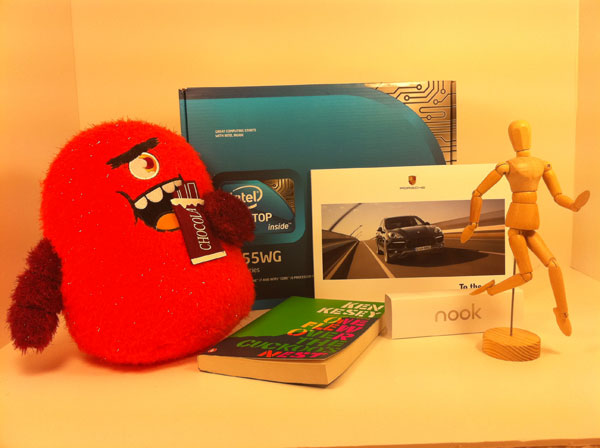
Regardless of where I tapped to focus, I could not get the iPhone 4 to set a proper white balance in our photo box.
While I was watching the screen, the iPhone 4 would alternate between yellow and white for the background color. It seemed to be trying to calculate the white point but was just being thrown off by the type of light. If I timed the shot right I could snag the photo while the iPhone was switching between white balance points:

I also had this problem in my office which uses LED can lights.

This is far more yellow than it should be
While Brian didn't have the same problems I did, Brandon Hill (DailyTech Editor in Chief) did. It seems to be very dependent on the type of lighting you have and even then it seems to vary based on the type of CFLs. And unlike the EVO 4G, there’s no way to manually set a white balance on the 4.
For overall image quality though I have to hand it to Apple, the iPhone 4 does do a better job than the EVO 4G or other phones I’ve used. Take a look at this shot inside my house:
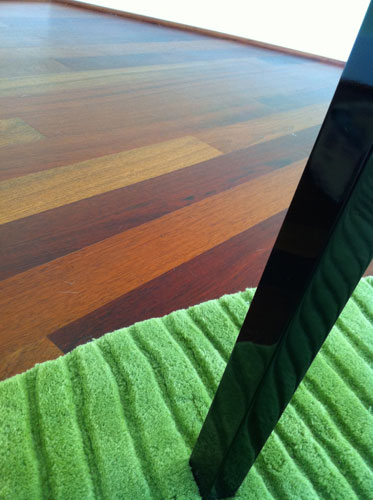
The colors in the iPhone 4 shot are on point. The green is correct, the wooden floor is right and the black is, well, black. The EVO 4G didn’t do so well on this test by comparison:
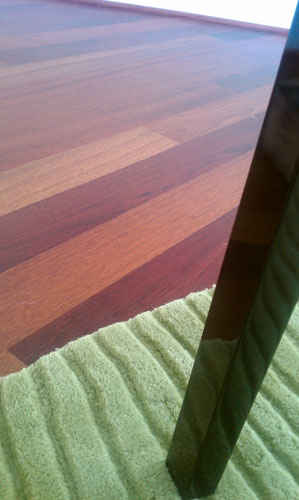
The 4’s camera isn’t perfect, but it does appear to handle colors better than the EVO (with the exception of my white balance issue) and delivers lower noise photos.
Compared to other phones the 4 does similarly well, besting the 5 megapixel camera in the Motorola Droid easily in terms of color reproduction and sharpness. Though the HTC Incredible previously was a top performer alongside the N900, the iPhone 4 makes the Incredible look a bit oversharpened and artificial. Compared to the 3GS, the iPhone 4's improvement is obviously dramatic, as shown in the gallery below.
Video is recorded at 1280x720, in H.264 with AAC mono audio. We measured a bitrate of 1.35 MBps, outclassing all the other smartphones we've tested.
iPhone 4
HTC Droid Incredible
Motorola Droid
Nokia N900
What's interesting is that the iPhone 4 appears to crop the sensor down for video recording, taking the center most 1280x720 pixels instead of scaling down the entire image size. The result is that the focal length for video recording is notably longer than when taking photos.
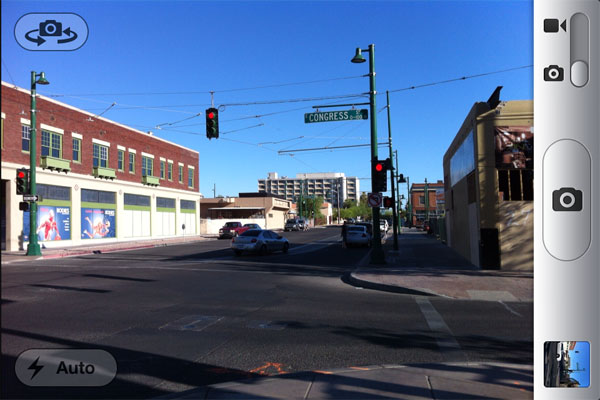
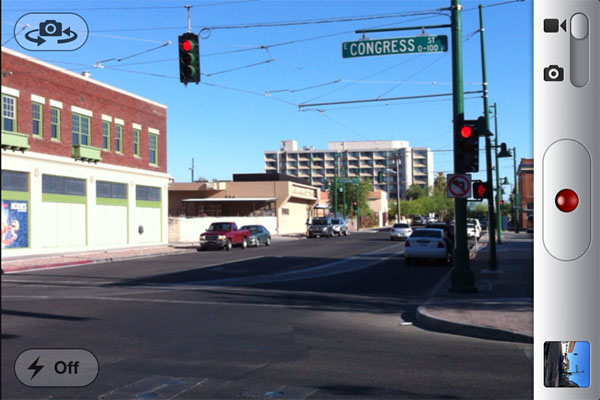
You can see the difference is quite notable standing in the same place. Perhaps the A4 SoC lacks the compute power to apply a scale and encode at the same time, necessitating this crop. Whatever the case, video shot with the iPhone 4 still looks very good at the promised and delivered 30 FPS. Move the camera around enough, and there's still screen door effect from the rolling shutter like any CMOS sensor is going to give you - it's a fundamental problem no phones are going to get around soon. Its also right there in the specifications page for the camera SoC; rolling shutter.
Similarly, iPhone 4 does give you 5x digital zoom, though we still maintain you're better off taking photos at native resolution and messing with them later with better interpolation algorithms.
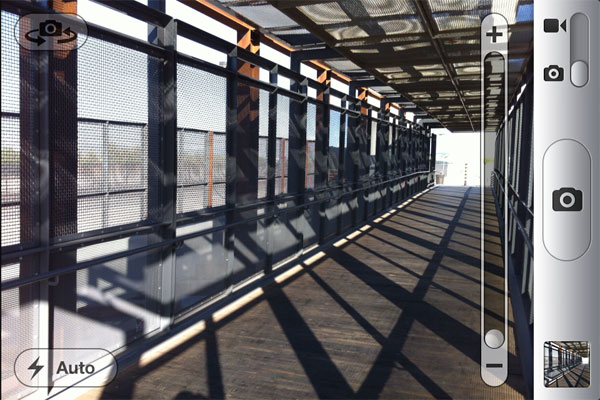
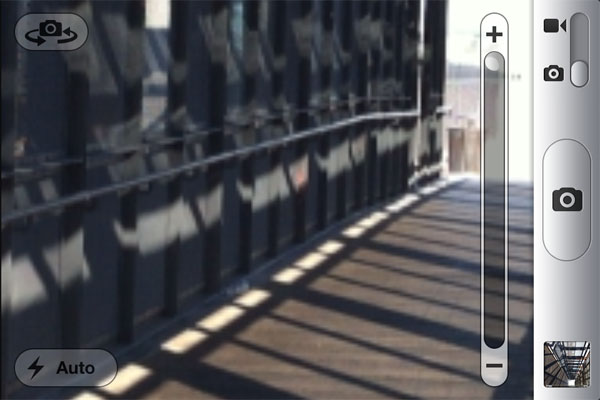






















270 Comments
View All Comments
JAS - Wednesday, June 30, 2010 - link
AT&T recently upgraded its 3G network in New York City. So, the improved wireless connection experienced with the iPhone 4 might be coincidental.http://news.cnet.com/8301-1035_3-20009134-94.html
John Sawyer - Thursday, July 1, 2010 - link
You mean, "might NOT be coincidental"?John Sawyer - Thursday, July 1, 2010 - link
A very large part of the problem between ATT and the iPhone prior to model 4, has been a weird interaction between the two, rather than being due to just one or the other. I don't know which party is more to "blame" for not having addressed this problem, but since the iPhone 4, and non-iPhones, experience much fewer problems with ATT's signal, I suspect Apple and the previous iPhone designs are more to blame, and ATT has allowed itself to take the brunt of it.Dennis Travis - Wednesday, June 30, 2010 - link
Another Outstanding review. So much detail. The part on the Antenna was great. Answered any questions I had about the iPhone 4.Thanks so much.
mongo lloyd - Wednesday, June 30, 2010 - link
"If you're married to Android, in the next 6 - 12 months we should see feature parity from the competition."I must be mad then, because I'd say there are Android smartphones out there that match, or even surpass the iPhone 4's features (especially software-wise), apart from battery life and the high-res screen (but the difference isn't massive between 600x960 and 480x800 or 480x854, plus you have the TFT vs (S)AMOLED pros and cons).
mongo lloyd - Wednesday, June 30, 2010 - link
It is a nice screen though, I must say.solipsism - Wednesday, June 30, 2010 - link
Buying and using nearly every new smartphone I can't say that Android beats iOS in any consumer way expect for the anemic notification system found on iOS, but while Android is pretty decent, it's still a far cry from WebOS. I haven't gotten the push for Froyo yet, have they finally fixed copy/paste on Android to?I see Android (and other) smartphones being in trouble in this next year against the iPhone 4. They will need to compete against the iPhone 4's display but at the risk of battery life, which they already do poorly in (despite the iPhone getting a bad rap). Unless Froyo has brought about some dynamic power management changes I don't think see other smartphones being as competitive as they would have been otherwise.
Spoelie - Wednesday, June 30, 2010 - link
In GSMarena's preview of iOS4, there is a whole list of features that iOS4 does not do that Android does. This is not a stab at iOS4, but it does validate the conclusions Anand makes and it proves that you can't really make blanket statements like "can't say that Android beats iOS in any consumer way". It just depends how much you value those kind of features. The list reads like this:* No Flash support in the web browser
* No true multitasking for all applications
* iOS4 for iPhone 3G has limited new feature set
* Poor performance on iPhone 3G
* No quick toggles for Wi-Fi, Bluetooth or 3G
* No social networking integration
* No info widgets on lockscreen or homescreen
* SMS tones are still not customizable
* No mass mark emails as read
* No proper file browser or access to the file system
* No USB mass storage mode
* No vibration feedback when touching the screen
* No Bluetooth file transfers to other mobile phones
* Contacts lack a swipe-to-delete or mass delete feature
* No SMS/MMS delivery notifications
* No smart dialing (but Spotlight is a somewhat of a substitute)
* No DivX or XviD video support and no official third-party application to play that
* The whole iPhone is too dependent on iTunes - you cannot add the same type of content (video, photos, apps) to the phone from two computers, a regular file management interface would have been much better
Again, not a stab at iOS4, just to point out the different markets.
FATCamaro - Wednesday, June 30, 2010 - link
I think all but 3 in your list are design choices rather than missing features. The only things that seem like features would be...* No info widgets on lockscreen or homescreen
* No SMS/MMS delivery notifications
* No mass mark emails as read
Griswold - Wednesday, June 30, 2010 - link
Theres no difference for the enduser between design choices and missing features - if it doesnt do what you want or need it to do, its not the right phone. That said, the feature set of android is much richer, but not everyone wants or needs that... apparently. Doesnt change the fact that android does beat iOs in many ways.